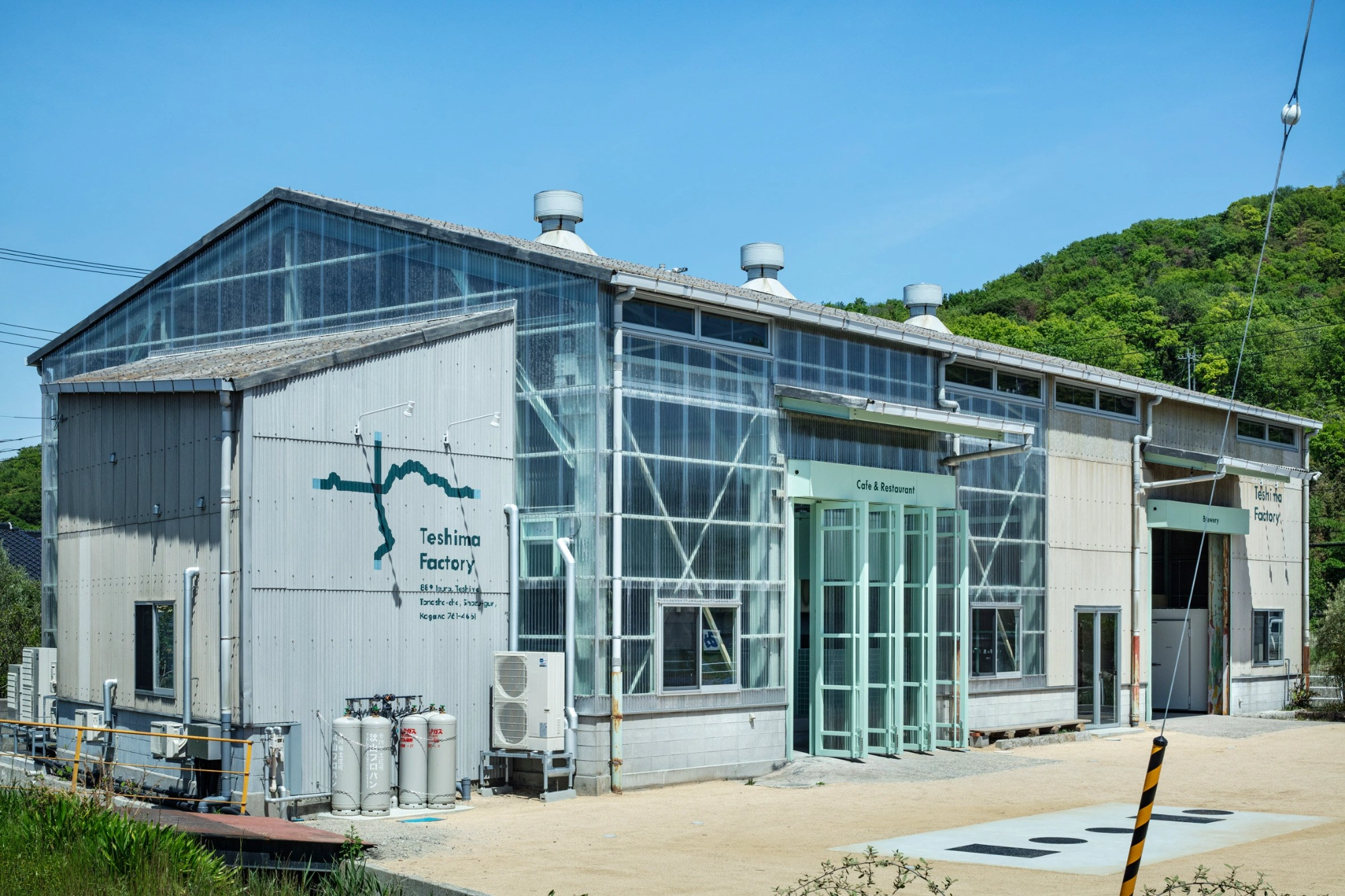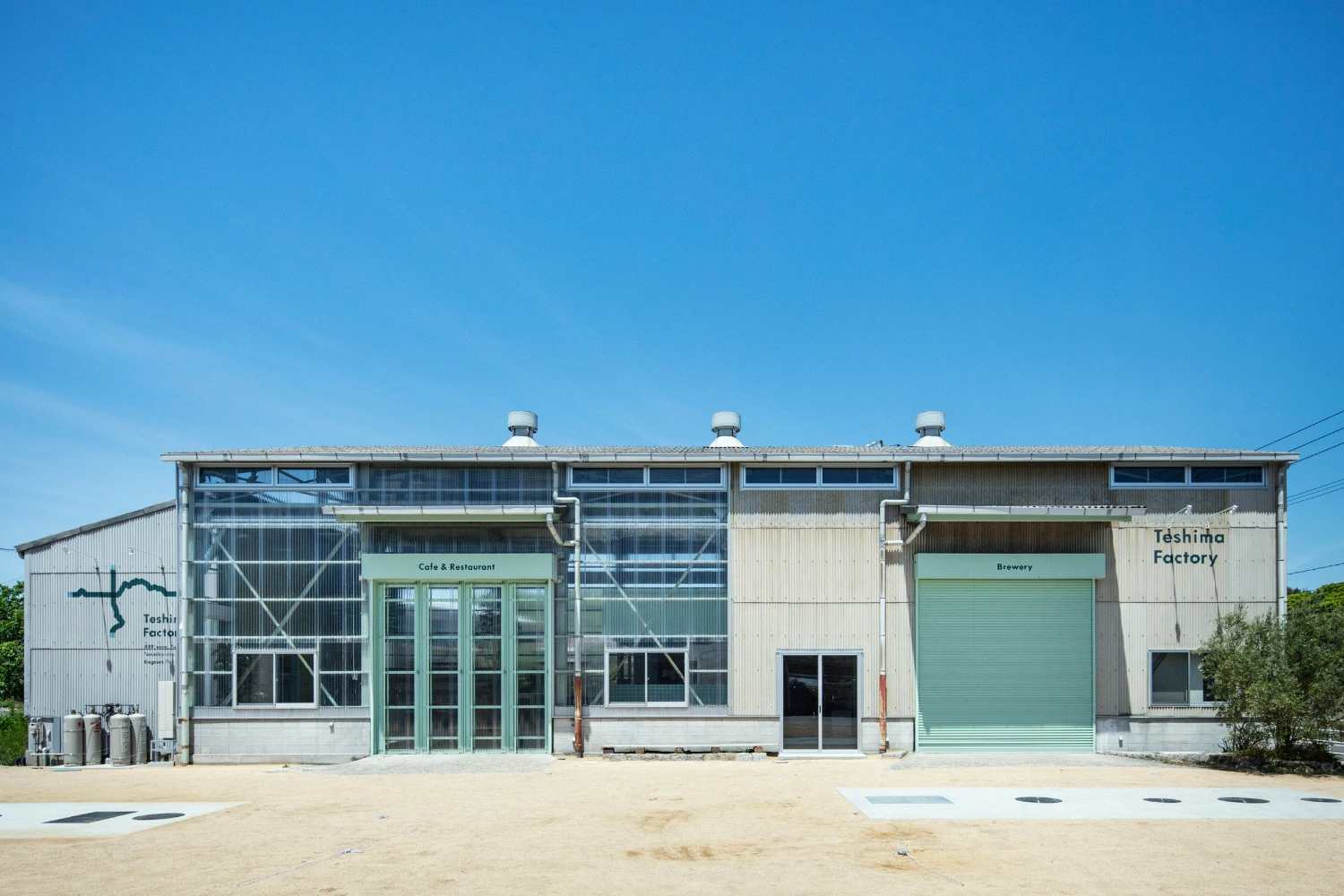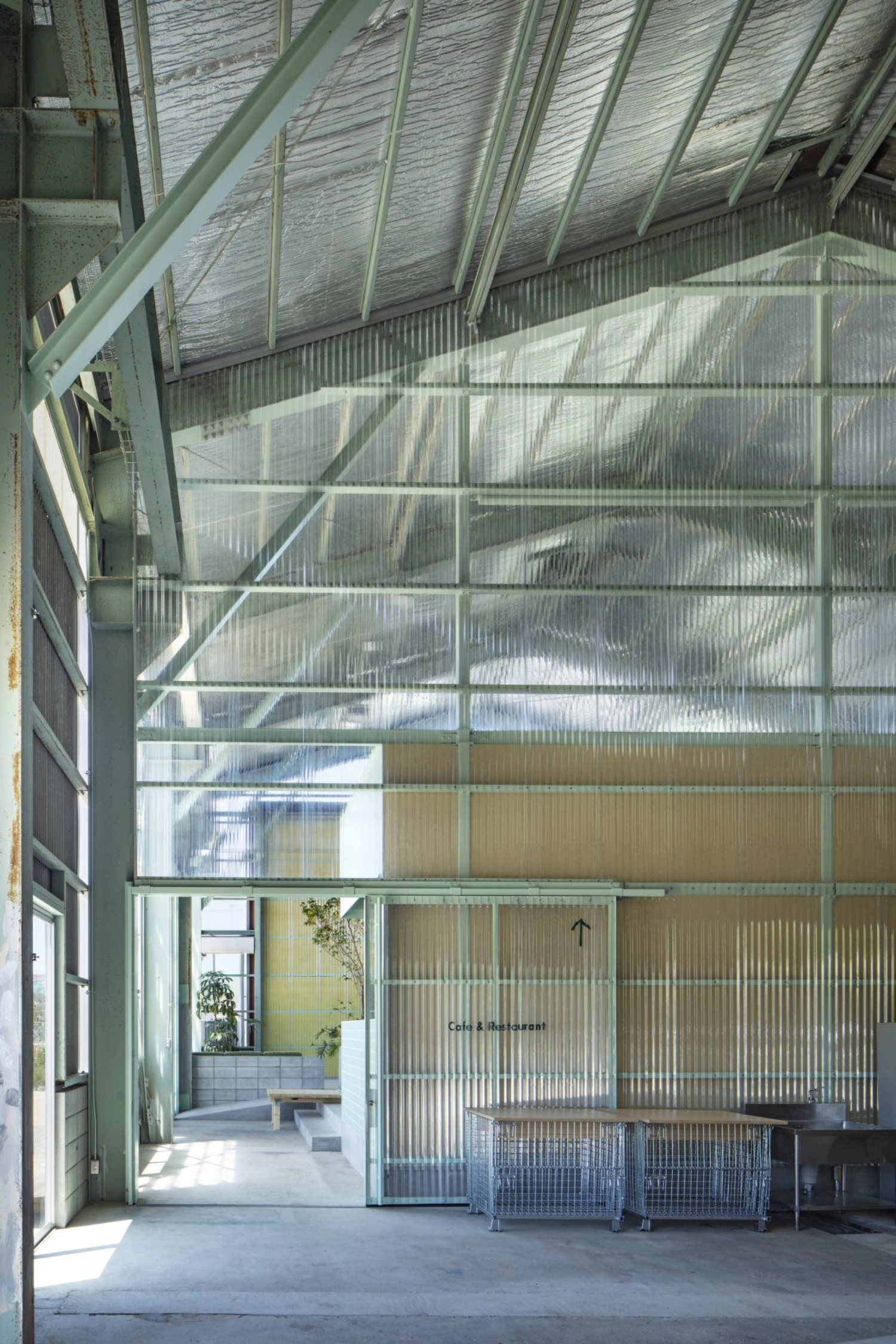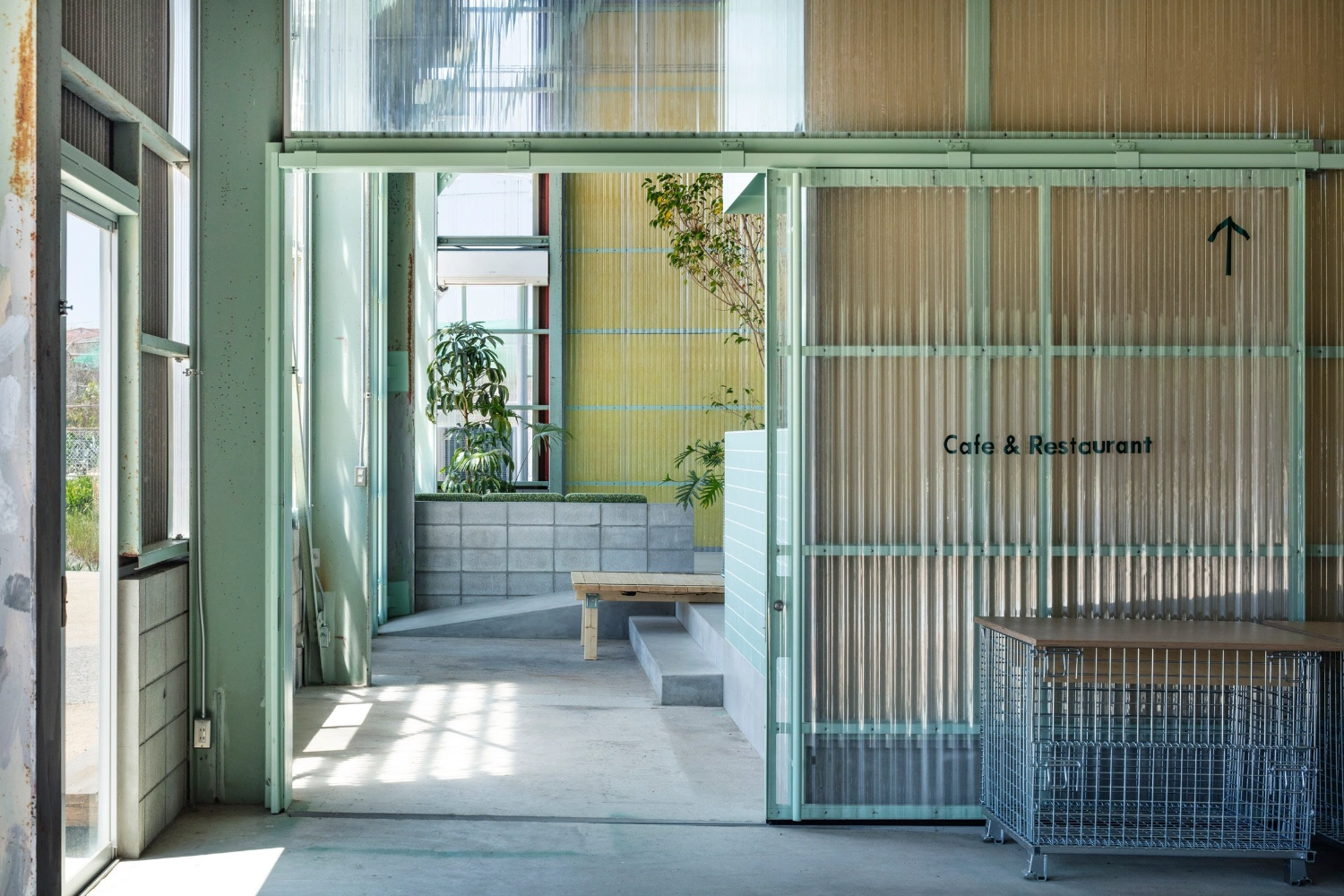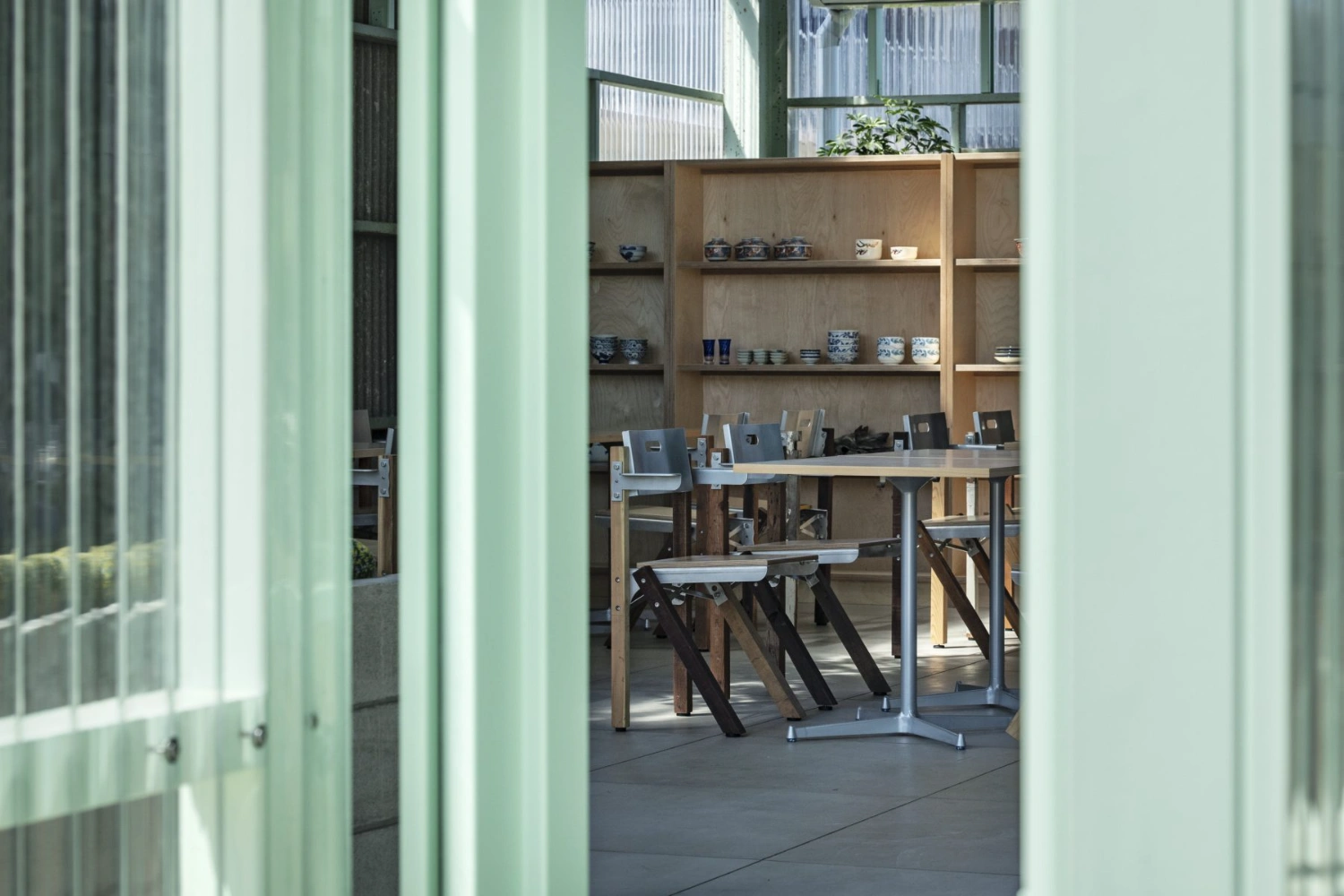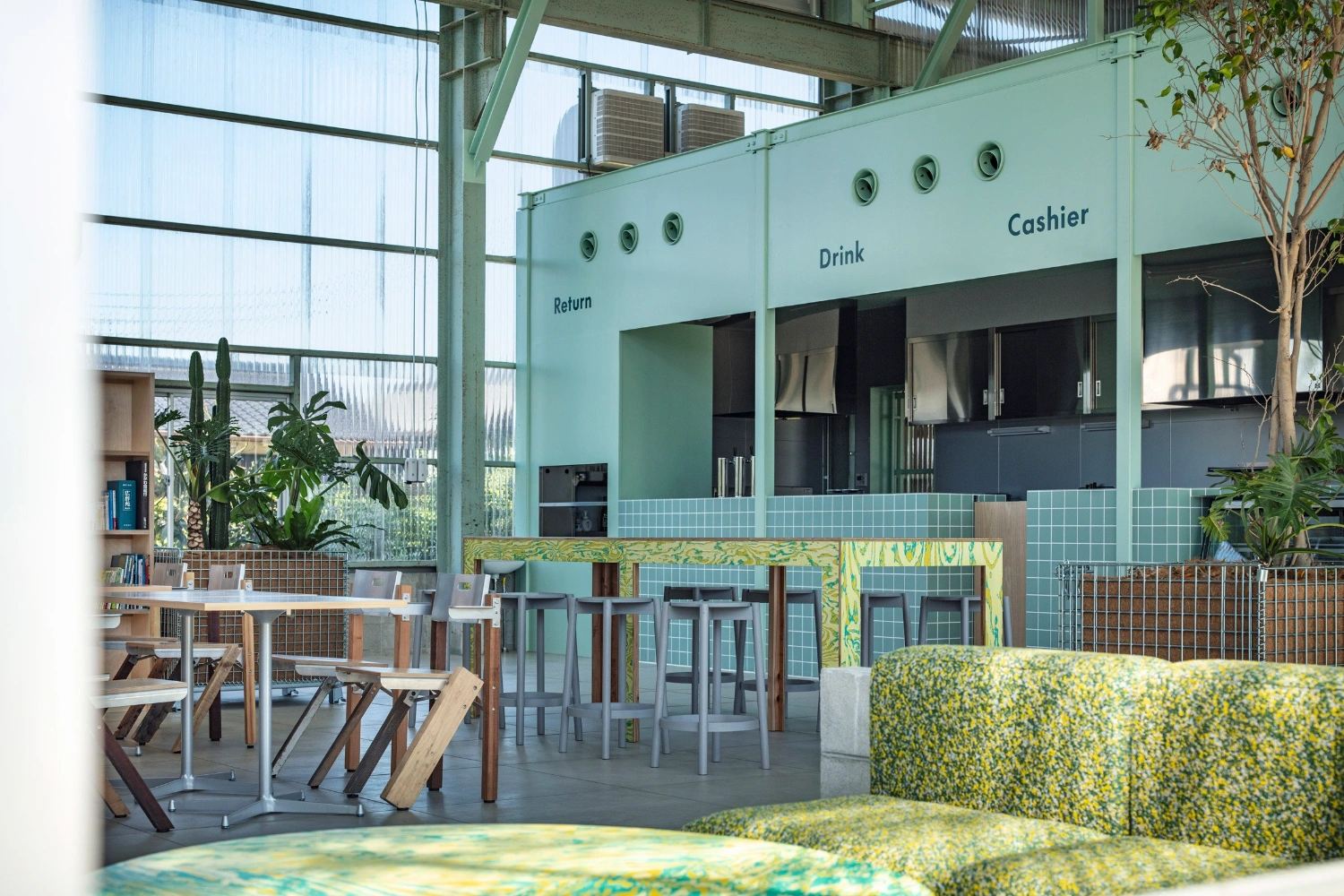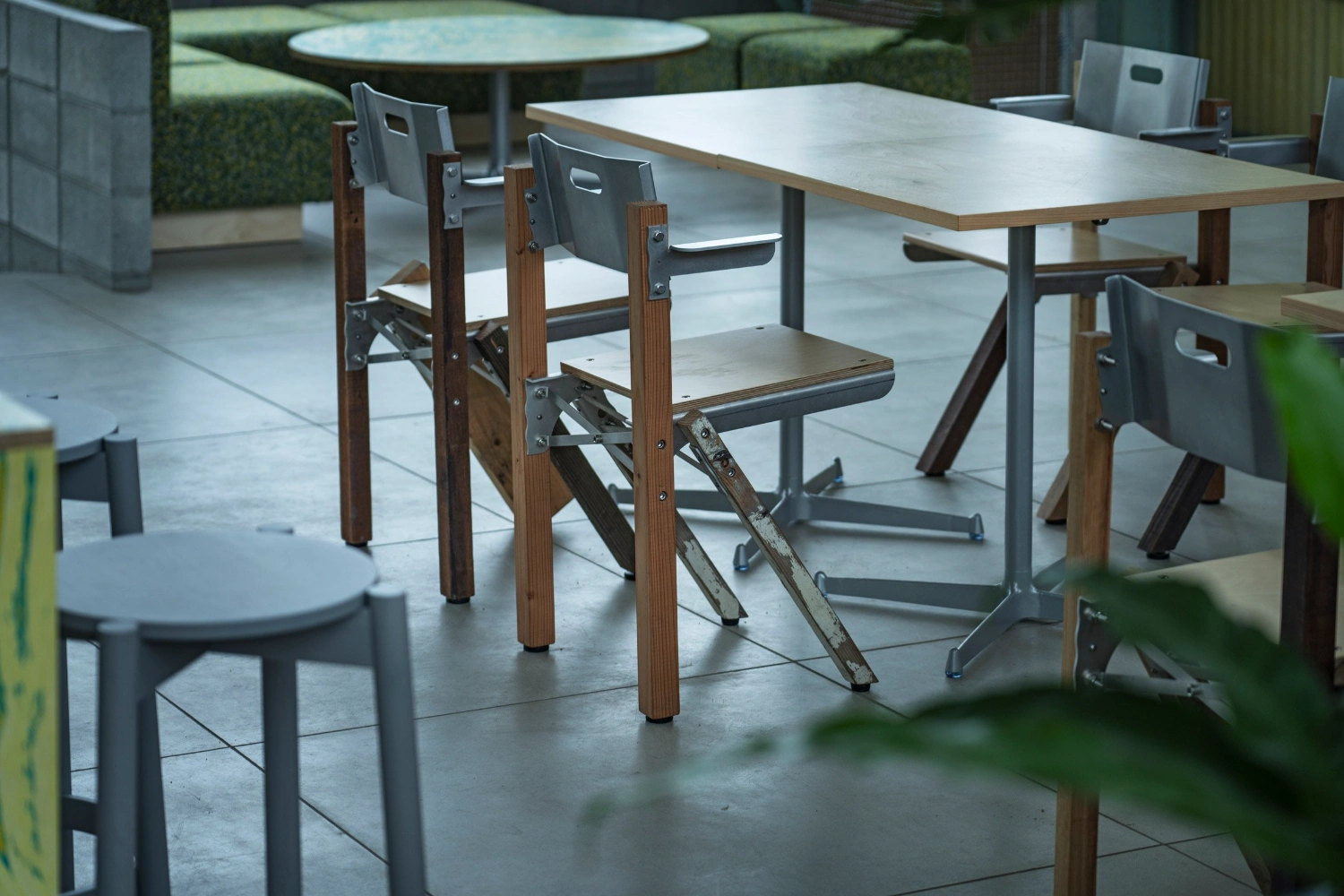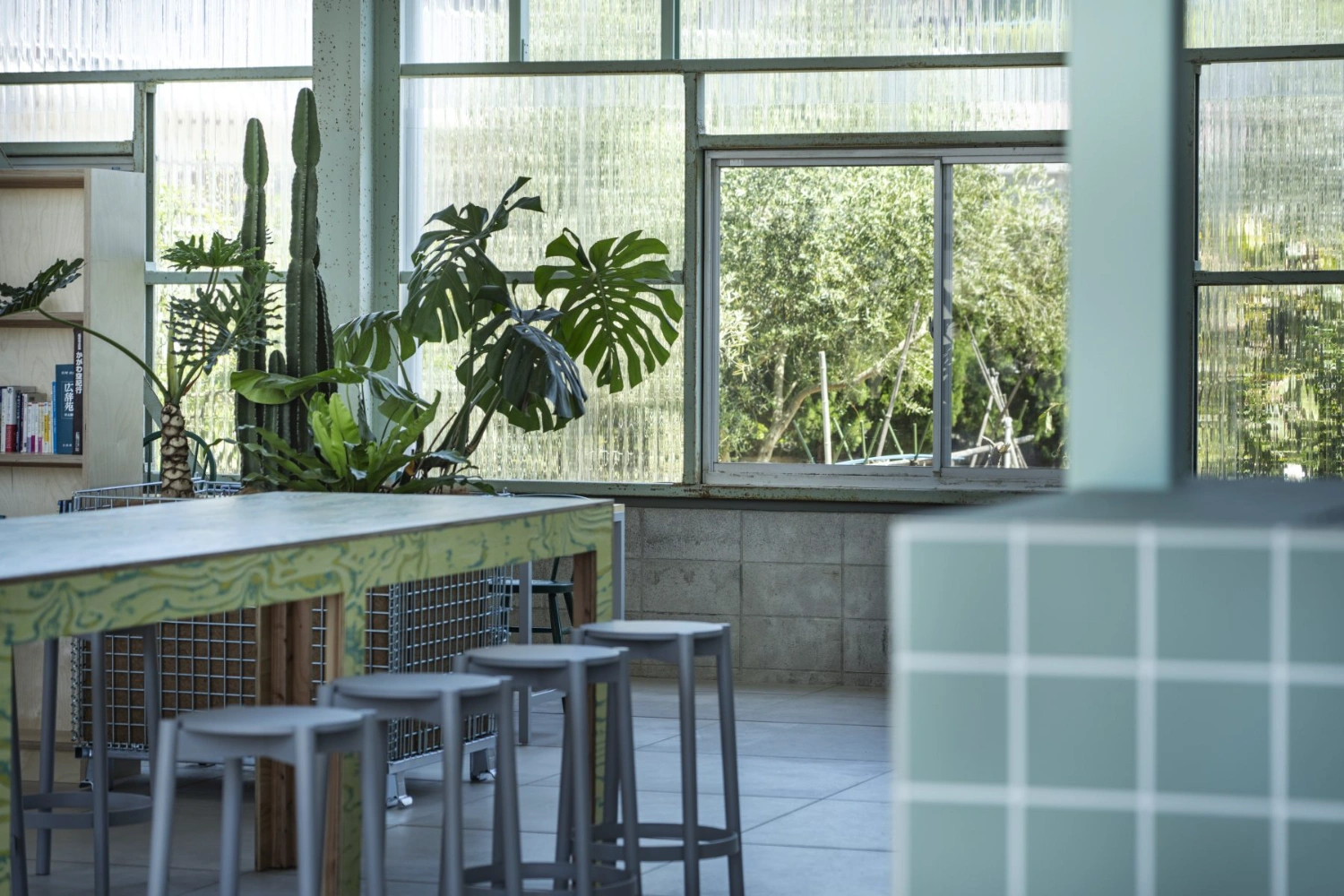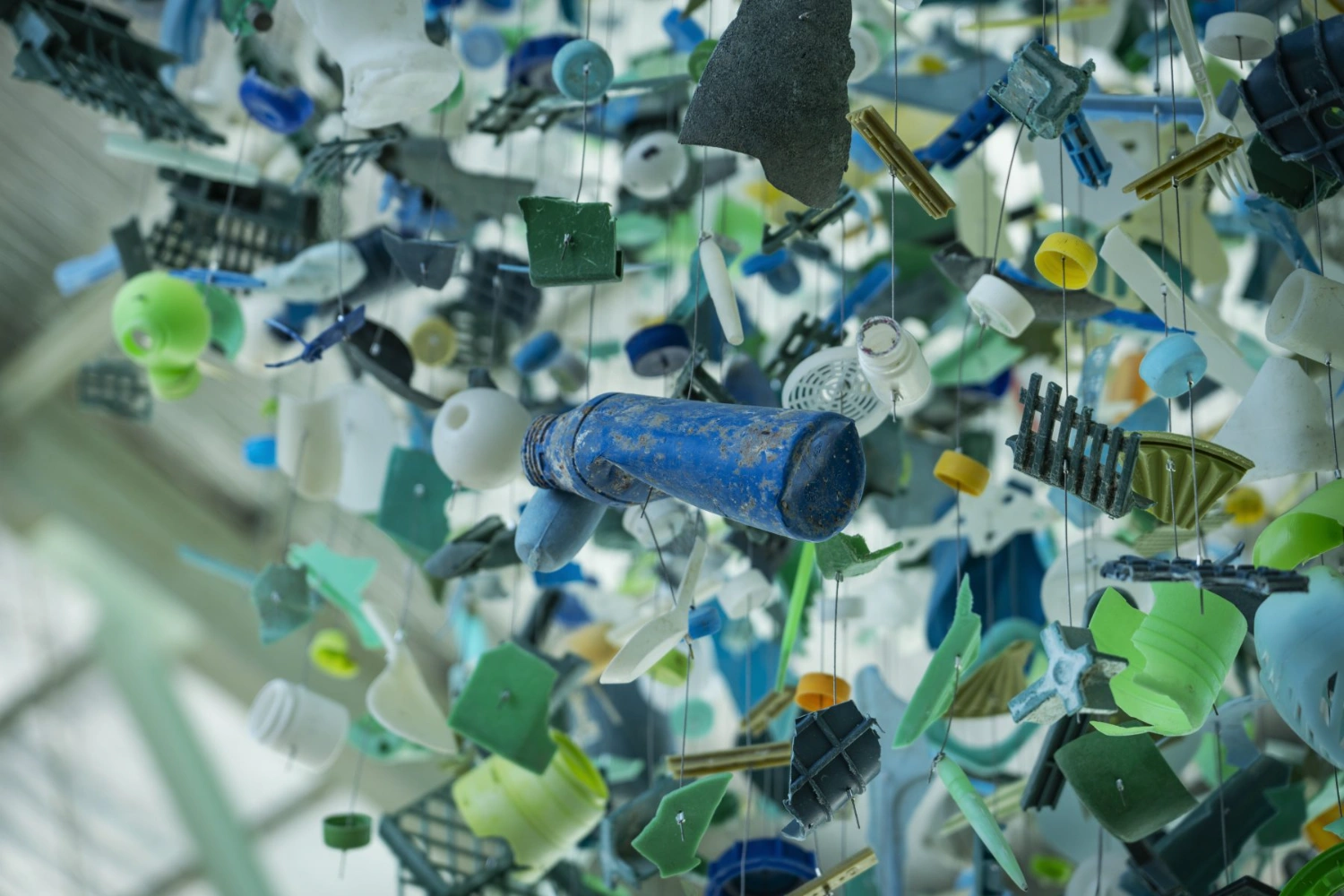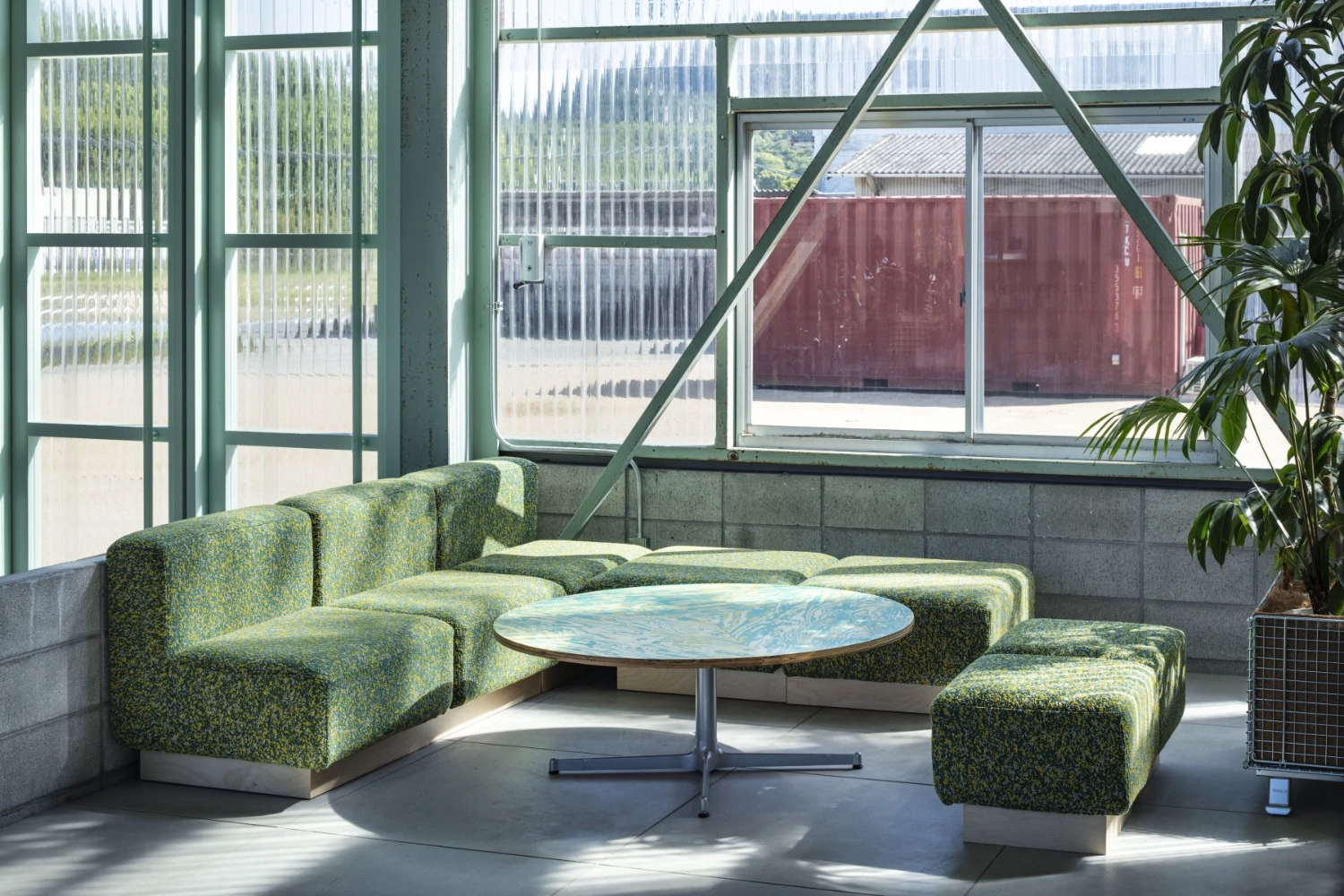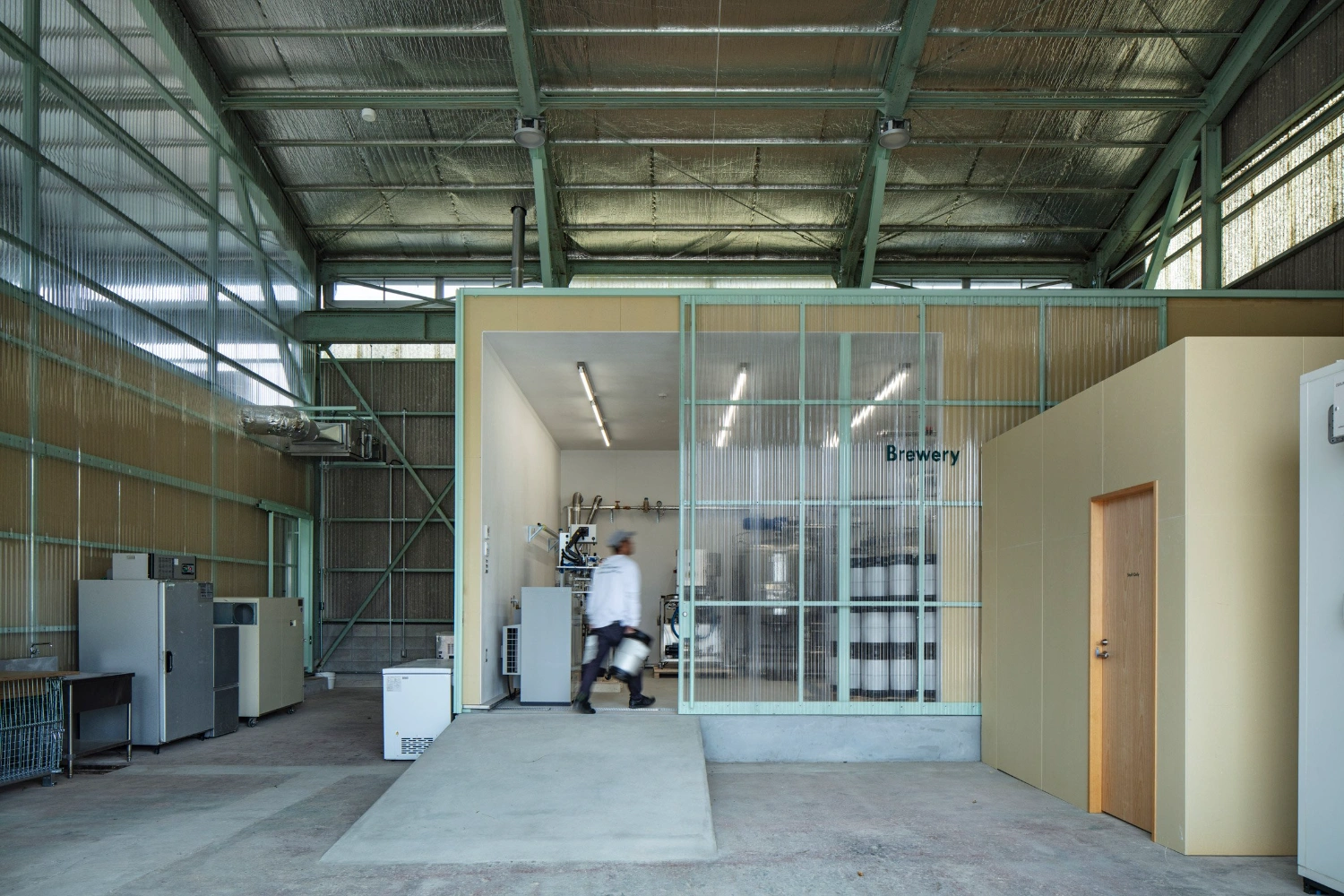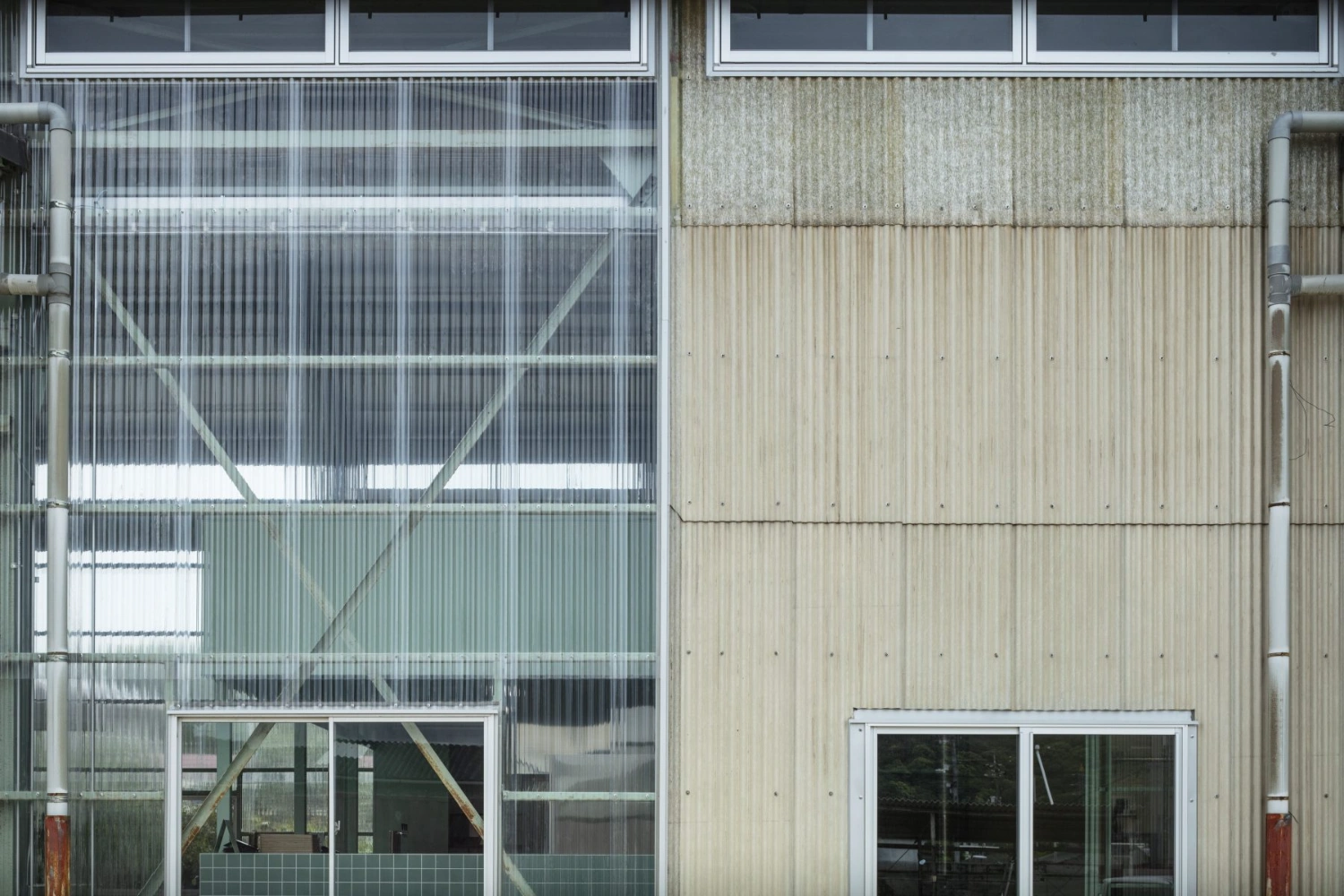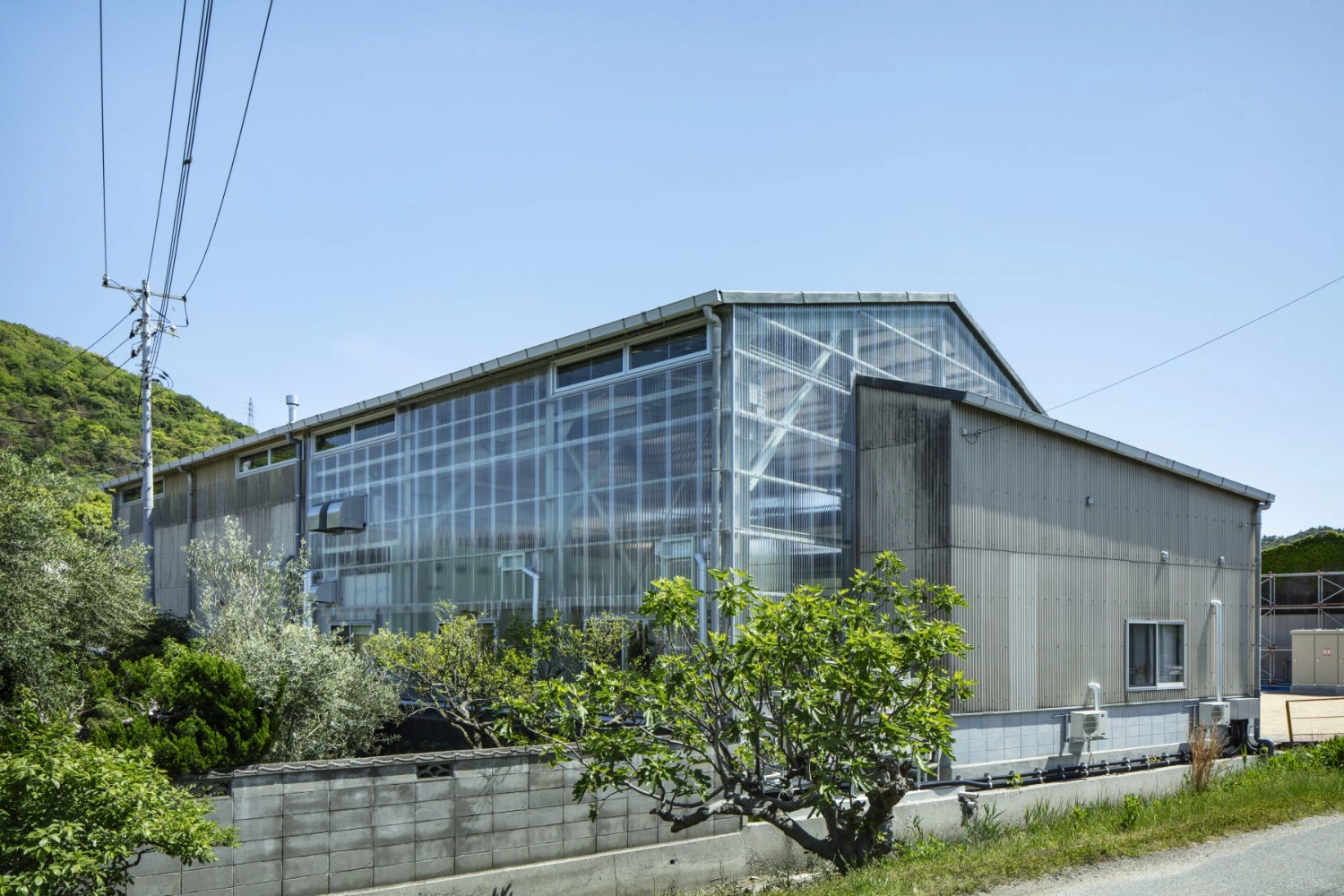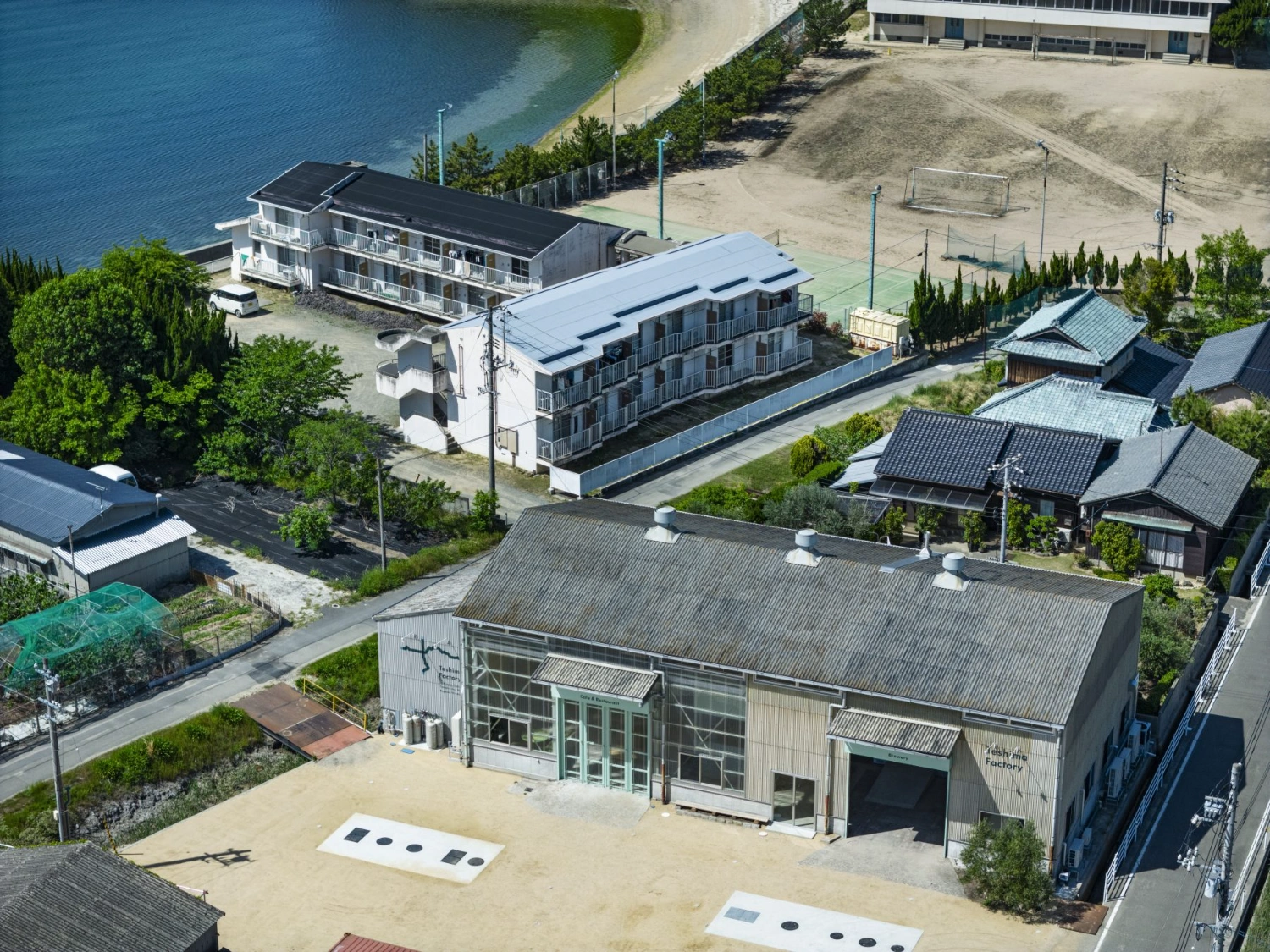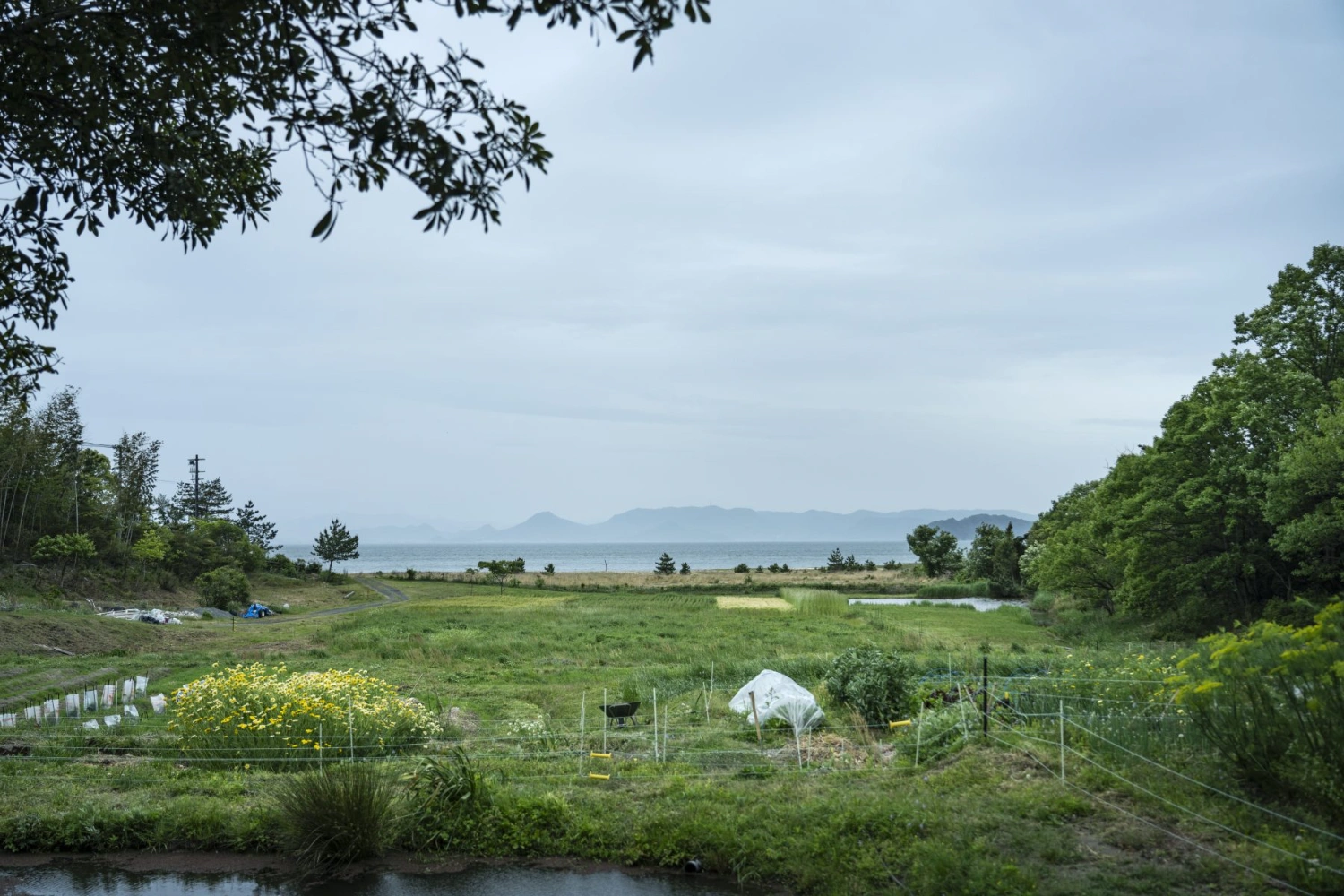Teshima Factory Café designed by Schemata Architects reconditions an old ironworks into a social and productive nexus, marrying architecture and ecology to reforge Japanese island identity and community.
In the waning light of a sea-swept day, the facade of the Teshima Factory Cafe reads as an architectural echo: half industrial relic, half new gesture. On the side facing the port, the retained slate roof of the former ironworks signals continuity, while on the cafeteria side, translucent corrugated panels permit daylight to suffuse the interior with an ethereal glow. The two volumes converge at the central entrance axis—an echo of the building’s history now transformed into a threshold between past and present.
This architectural bifurcation mirrors Teshima’s own dual narrative: once known as “Garbage Island” because of illegal dumping, the island has, in recent decades, turned its isolation into an asset. Distanced from the mainland, its ecosystems gained a fragile purity. Today, that slowness is an ecological advantage—its water sources, terraced rice paddies, and sea-fed cycles sustaining a self-reliant life. The Teshima Art Museum quietly underscores this ethos, embedding itself so lightly in the landscape it seems invisible. The Factory Cafe picks up this thread: rather than a bold new monument, it is a modest node in the island’s regenerative cycle.
Inside, the palette is restrained. The steel frame’s original patina informs the fixtures and furniture, while spherical lights cast a soft ambient shimmer. These globes, fashioned from recycled marine plastics, offer a conscious nod to the island’s present challenges and possibilities. Below them sit chairs co‑designed by Dutch artist Sander Wassink in collaboration with islanders—objects that embody a social contract between designer, community and place.
Programmatically, the building is both a production facility and a social anchor. One wing houses a micro‑brewery while the other flows into a café where islanders and visitors convene. Here, conversations over simple island cuisine become gestures of rebuilding community. The factory and café are twin pieces of a larger project: to reanimate local agriculture, generate new specialties, and foster a type of agricultural tourism rooted in place and memory.

